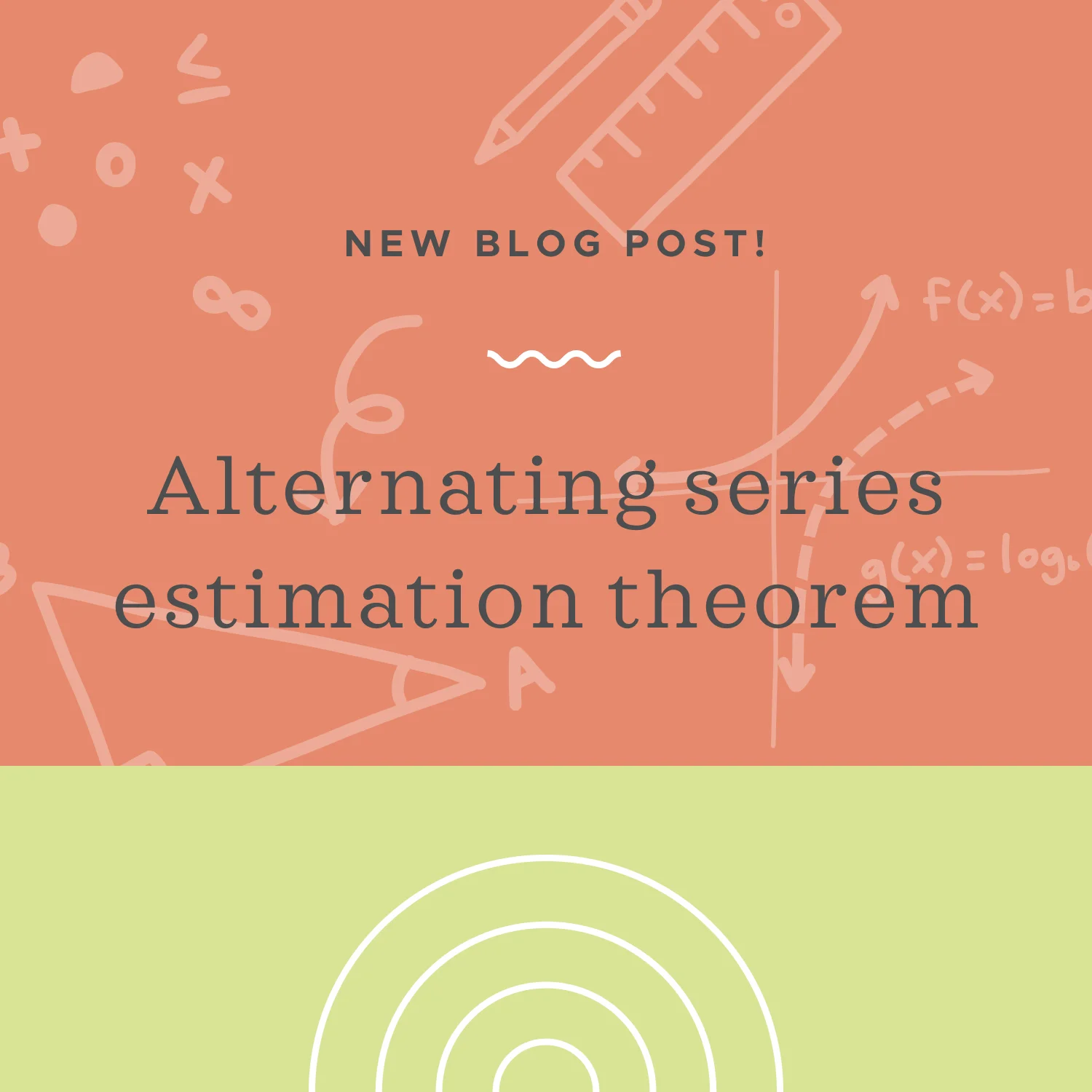We can use power series to estimate definite integrals in the same way we used them to estimate indefinite integrals. The only difference is that we’ll evaluate over the given interval once we find a power series that represents the original integral. To evaluate over the interval, we’ll expand the power series through its first few terms, and then evaluate each term separately over the interval.
Read MoreRemember that a sequence is convergent if its limit exists as n approaches infinity. So it makes sense that once we know that a sequence is convergent, we should be able to evaluate the limit as n approaches infinity and get a real-number answer. The way that we simplify and evaluate the limit will depend on the kind of functions we have in our sequence (trigonometric, exponential, etc.), but we know that the limit as n goes to infinity exists.
Read MoreSequences are always either monotonic or not monotonic. If a sequence is monotonic, it means that it’s always increasing or always decreasing. If a sequence is sometimes increasing and sometimes decreasing and therefore doesn’t have a consistent direction, it means that the sequence is not monotonic. In other words, a non-monotonic sequence is increasing for parts of the sequence and decreasing for others.
Read MoreA normal series is given by a_n, where a_n is the sequence whose n values increase by increments of 1. On the other hand, a partial sums sequence is called s_n, and its n values increase by additive increments. This means that the first term in a partial sums sequence is the n=1 term, the second term is the n=1 term plus the n=2 term, the third term is (n=1)+(n=2)+(n=3), etc.
Read MoreTelescoping series are series in which all but the first and last terms cancel out. If you think about the way that a long telescope collapses on itself, you can better understand how the middle of a telescoping series cancels itself. To determine whether a series is telescoping, we’ll need to calculate at least the first few terms to see whether the middle terms start canceling with each other.
Read MoreWe can use the p-series test for convergence to say whether or not a_n will converge. The p-series test says that a_n will converge when p>1 but that a_n will diverge when p≤1. The key is to make sure that the given series matches the format above for a p-series, and then to look at the value of p to determine convergence.
Read MoreWhen the terms of a series decrease toward 0, we say that the series is converging. Otherwise, the series is diverging. The nth term test is inspired by this idea, and we can use it to show that a series is diverging. Ironically, even though the nth term test is one of the convergence tests that we learn when we study sequences and series, it can only test for divergence, it can never confirm convergence.
Read MoreThe ratio test for convergence lets us determine the convergence or divergence of a series a_n using a limit, L. Once we find a value for L, the ratio test tells us that the series converges absolutely if L<1, and diverges if L>1 or if L is infinite. The test is inconclusive if L=1. The ratio test is used most often when our series includes a factorial or something raised to the nth power.
Read MoreThe interval of convergence of a series is the set of values for which the series is converging. Remember, even if we can find an interval of convergence for a series, it doesn’t mean that the entire series is converging, only that the series is converging in the specific interval. The radius of convergence of a series is always half of the interval of convergence. You can remember this if you think about the interval of convergence as the diameter of a circle.
Read MoreWe can use the formula for the sum of a geometric series to quickly and accurately convert a repeating decimal into a ratio of integers, in other words, into a fraction with whole numbers in the numerator and denominator.
Read MoreThis theorem looks elaborate, but it’s nothing more than a tool to find the remainder of a series. For example, oftentimes we’re asked to find the nth-degree Taylor polynomial that represents a function f(x). The sum of the terms after the nth term that aren’t included in the Taylor polynomial is the remainder. We can use Taylor’s inequality to find that remainder and say whether or not the nth-degree polynomial is a good approximation of the function’s actual value.
Read MoreTaylor series let us find a series representation for any function. In order to create a Taylor series representation for a function, we’ll need ‘a’, the value about which the function is defined and ‘n’, the degree to which we want to evaluate the function. Both of these are usually given in the problem. With a value for ‘a’ and ‘n’, we can build the chart below.
Read MoreTelescoping series are series in which all but the first and last terms cancel out. If you think about the way that a long telescope collapses on itself, you can better understand how the middle of a telescoping series cancels itself.
Read MoreThe integral test for convergence is only valid for series that are 1) Positive: all of the terms in the series are positive, 2) Decreasing: every term is less than the one before it, a_(n-1)> a_n, and 3) Continuous: the series is defined everywhere in its domain. The integral test tells us that, if the integral converges, then the series also converges. But if the integral diverges, then the series also diverges.
Read MoreThe root test is used most often when the series includes something raised to the nth power.The convergence or divergence of the series depends on the value of L. The series converges absolutely if L<1, diverges if L>1 (or L is infinite), and the root test is inconclusive if L=1.
Read MoreOnly if a geometric series converges will we be able to find its sum. The sum of a convergent geometric series is found using the values of ‘a’ and ‘r’ that come from the standard form of the series.
Read MoreThe alternating series estimation theorem gives us a way to approximate the sum of an alternating series with a remainder or error that we can calculate. To use the theorem, the alternating series must follow two rules.
Read More


















